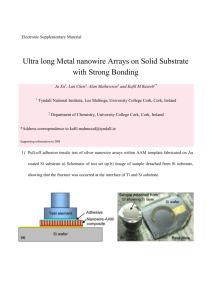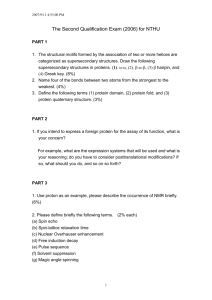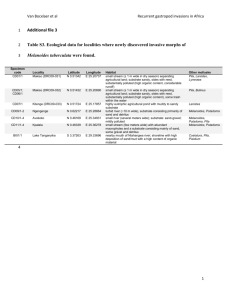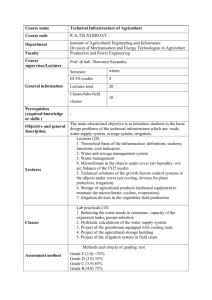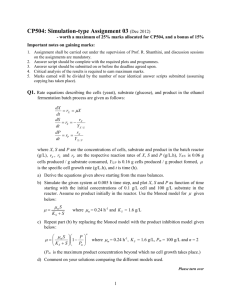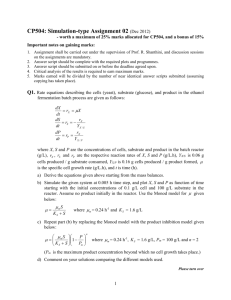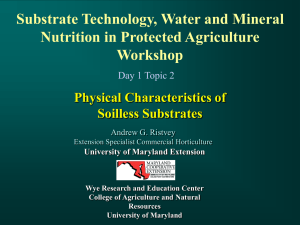Growth of native aromatic xerophytes in an extensive Mediterranean
advertisement
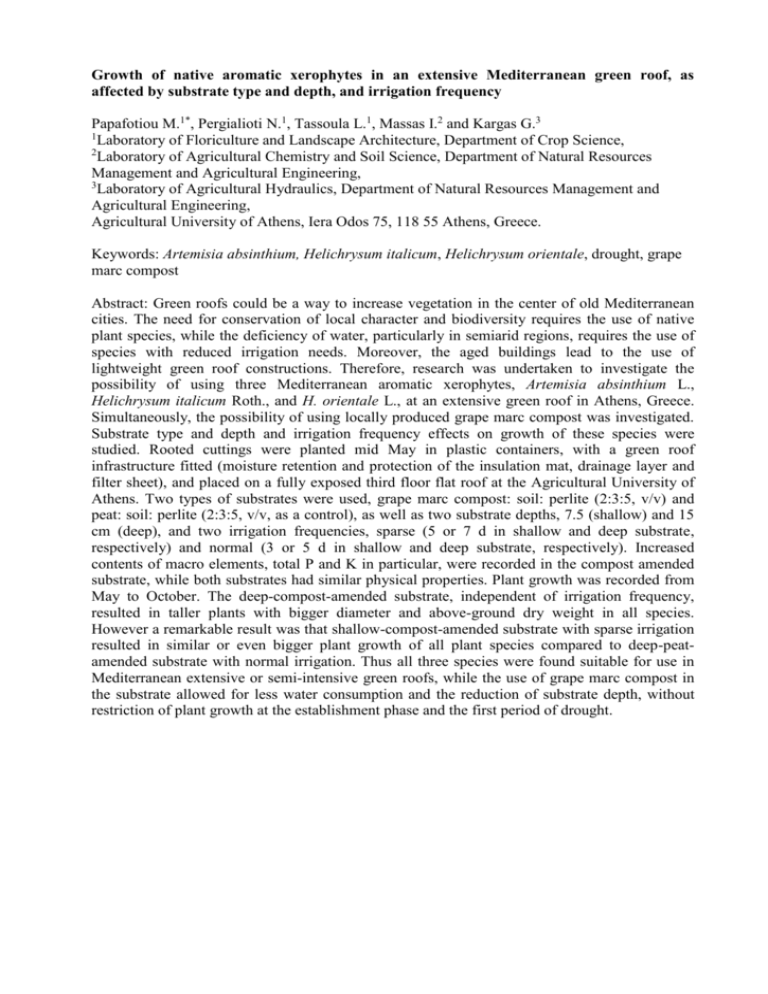
Growth of native aromatic xerophytes in an extensive Mediterranean green roof, as affected by substrate type and depth, and irrigation frequency Papafotiou Μ.1*, Pergialioti N.1, Tassoula L.1, Massas I.2 and Kargas G.3 1 Laboratory of Floriculture and Landscape Architecture, Department of Crop Science, 2 Laboratory of Agricultural Chemistry and Soil Science, Department of Natural Resources Management and Agricultural Engineering, 3 Laboratory of Agricultural Hydraulics, Department of Natural Resources Management and Agricultural Engineering, Agricultural University of Athens, Iera Odos 75, 118 55 Athens, Greece. Keywords: Artemisia absinthium, Helichrysum italicum, Helichrysum orientale, drought, grape marc compost Abstract: Green roofs could be a way to increase vegetation in the center of old Mediterranean cities. The need for conservation of local character and biodiversity requires the use of native plant species, while the deficiency of water, particularly in semiarid regions, requires the use of species with reduced irrigation needs. Moreover, the aged buildings lead to the use of lightweight green roof constructions. Therefore, research was undertaken to investigate the possibility of using three Mediterranean aromatic xerophytes, Artemisia absinthium L., Helichrysum italicum Roth., and H. orientale L., at an extensive green roof in Athens, Greece. Simultaneously, the possibility of using locally produced grape marc compost was investigated. Substrate type and depth and irrigation frequency effects on growth of these species were studied. Rooted cuttings were planted mid May in plastic containers, with a green roof infrastructure fitted (moisture retention and protection of the insulation mat, drainage layer and filter sheet), and placed on a fully exposed third floor flat roof at the Agricultural University of Athens. Two types of substrates were used, grape marc compost: soil: perlite (2:3:5, v/v) and peat: soil: perlite (2:3:5, v/v, as a control), as well as two substrate depths, 7.5 (shallow) and 15 cm (deep), and two irrigation frequencies, sparse (5 or 7 d in shallow and deep substrate, respectively) and normal (3 or 5 d in shallow and deep substrate, respectively). Increased contents of macro elements, total P and K in particular, were recorded in the compost amended substrate, while both substrates had similar physical properties. Plant growth was recorded from May to October. The deep-compost-amended substrate, independent of irrigation frequency, resulted in taller plants with bigger diameter and above-ground dry weight in all species. However a remarkable result was that shallow-compost-amended substrate with sparse irrigation resulted in similar or even bigger plant growth of all plant species compared to deep-peatamended substrate with normal irrigation. Thus all three species were found suitable for use in Mediterranean extensive or semi-intensive green roofs, while the use of grape marc compost in the substrate allowed for less water consumption and the reduction of substrate depth, without restriction of plant growth at the establishment phase and the first period of drought.



